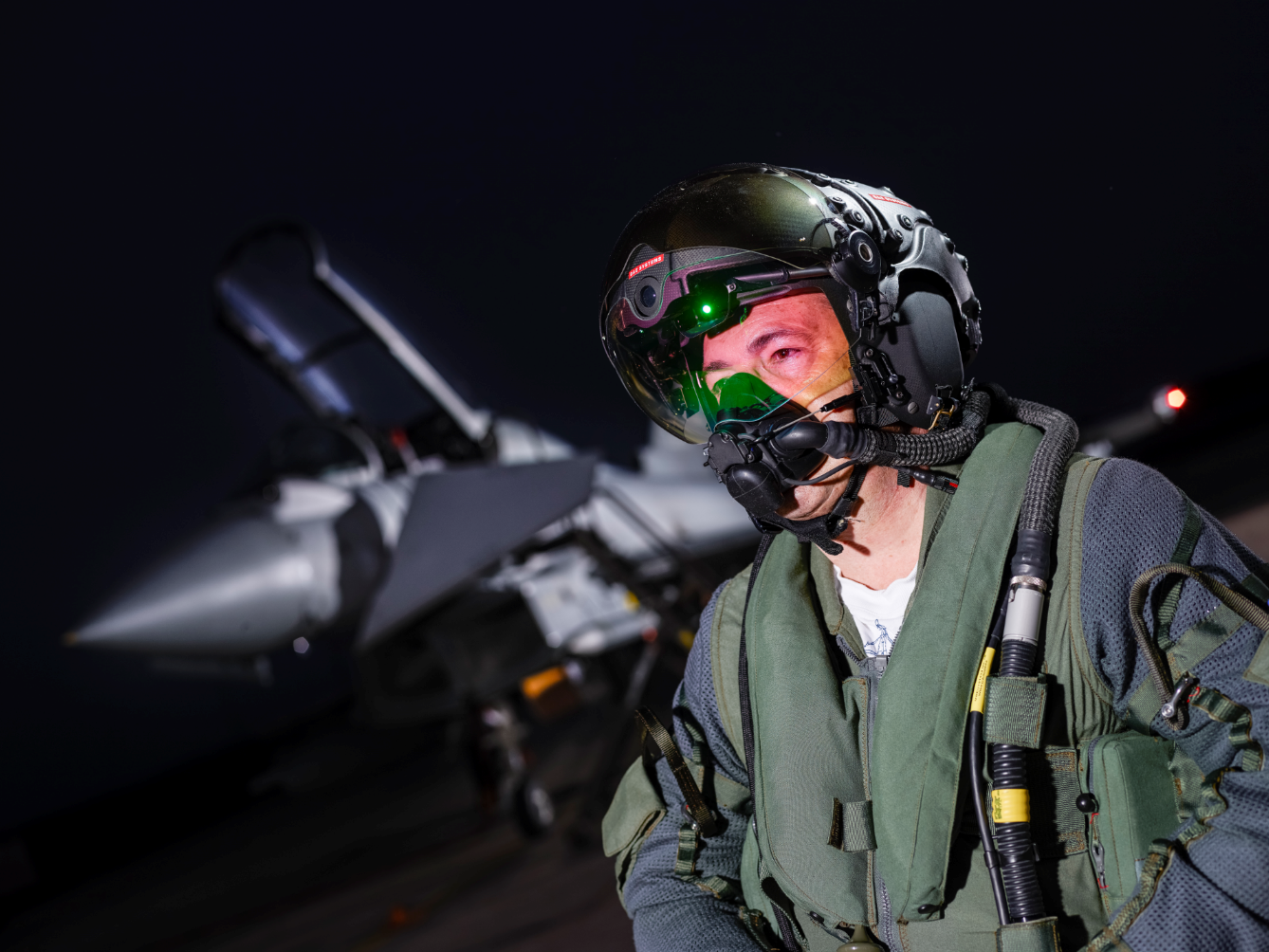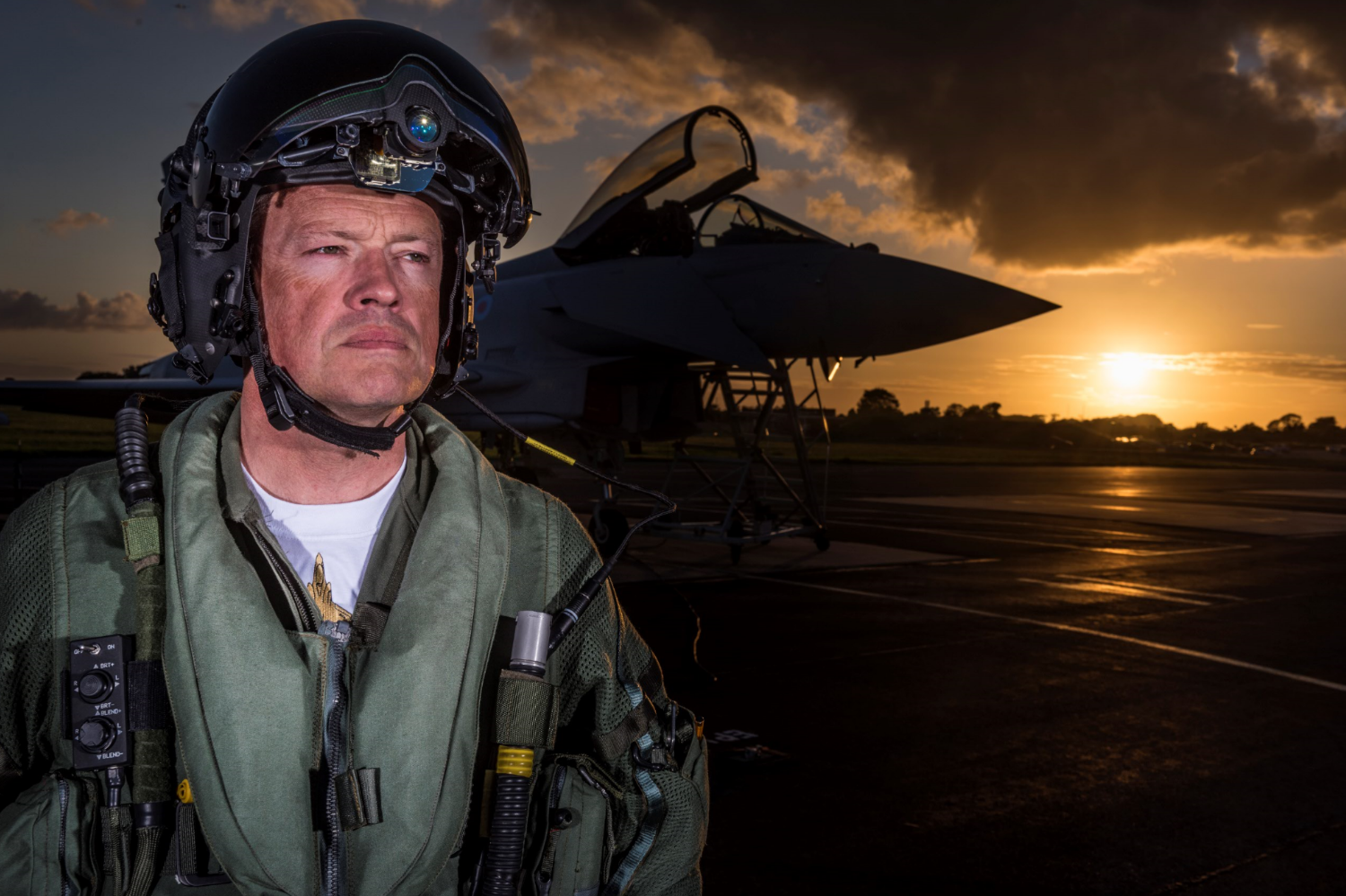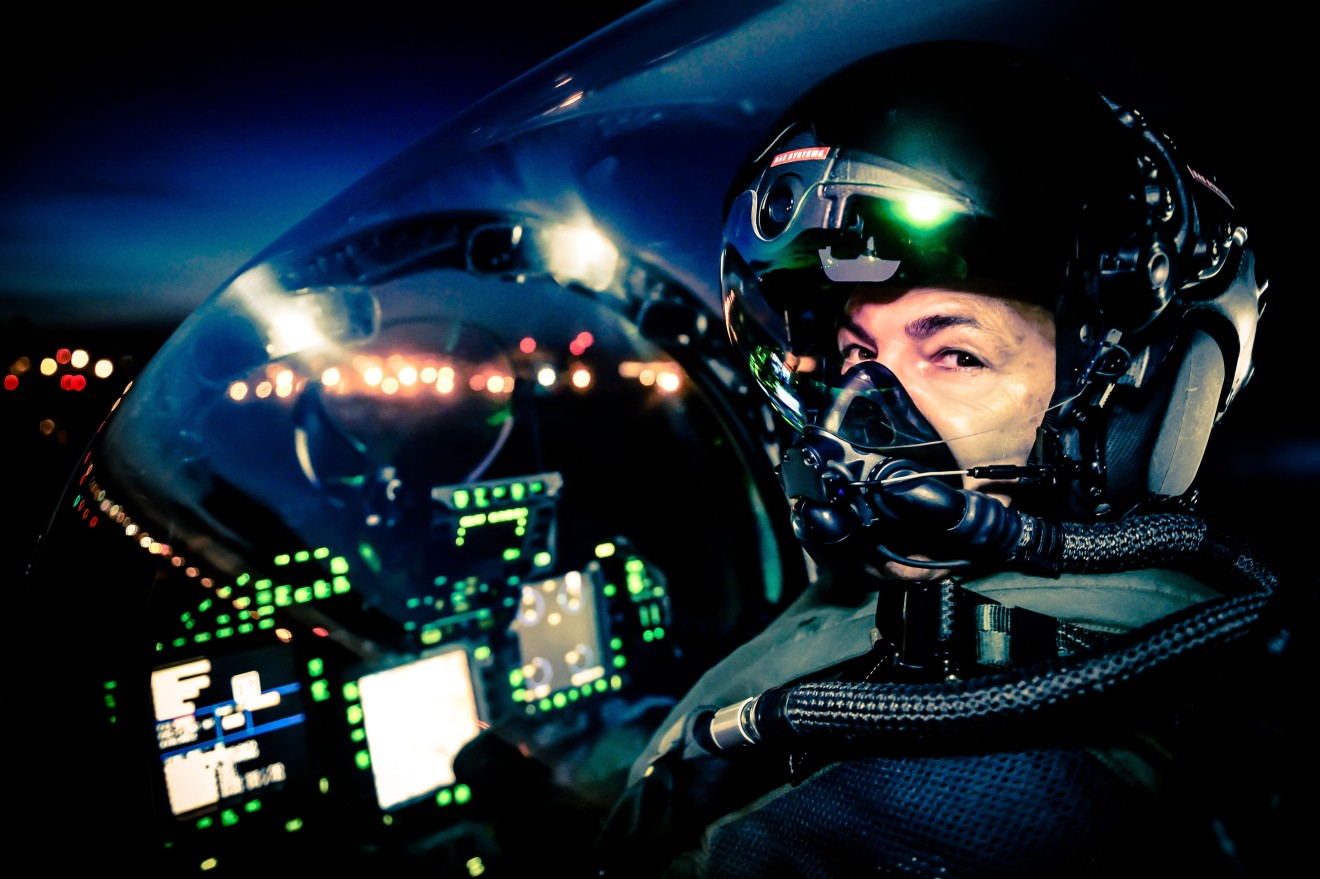The original Striker — the world’s first visor-projected helmet system — went into service in Eurofighter Typhoon in 2009. It’s the only helmet of its class that boasts so much operational experience. But, it’s essentially built around analogue technology - that’s Cathode Ray Tube displays and high voltage power supplies.
The digital upgrade Striker II does far more than simply replace old analogue elements. It’s radically different. For starters, going from analogue to digital means the BAE Systems team behind it at Rochester in the UK have been able to lay out the electronics in a much more sympathetic way in terms of pilot comfort.

On a set of scales there’s not much between the original Striker and Striker II, (they’re both about two kilos), but pilots who are used to the original feel Striker II is lighter simply because the centre of gravity is perfectly balanced, whereas the original was quite nose heavy because of the limitations associated with analogue technology.
The design team has taken the lessons from nine years of operational experience on Typhoon to make a number of improvements, starting with the fitting process. They carry out a contact scan of the pilot’s skull, and the liner is made to the shape of the pilot’s head to ensure a perfect fit. A perfect fit means a pilot can sustain 9G manoeuvring.
Another improvement is the optical tracking system. Its high speed and accurate to almost a milliradian.
Paul Harrison, Simulation Facility Manager at Rochester, says: “When the pilot puts Striker II on, everything lines up and is ready to go, making the whole operation very fast. The digital system augments the aircraft’s optical tracker with an inertial tracker, giving the pilots seamless tracking.
“But the real reason inertial tracking is being introduced is because of specially- designed algorithms which predict where the pilot is moving their head. The system is able to draw symbology, so when the pilots stop moving their head everything is there instantaneously.”
Previously there was a limit to the number of symbols that could be drawn, but the digital system allows any amount of symbology, plus it can be in full colour and display any sensor data, from the poorest sensor right up to a full high-def colour display.
Essentially, the helmet can take every bit of data the aircraft has — whatever the source, as soon as that data is on the aircraft it can be presented to the pilot who is eyes up, on the visor.
This cuts out the time spent looking down into the cockpit at displays.
Adds Paul: “It means pilots see their world in a very intuitive way and by colourising the display it is even more attention grabbing. The system gives pilots complete spatial awareness and reduces their workload because they don’t have try to work out what’s out there.”
That’s not all. The system allows them to stream high definition colour video from different sources to add to their battlespace picture. There’s also integrated digital night vision, meaning pilots no longer need to wear night vision goggles, which add weight and limit manoeuvrability. Plus there’s the option to have complete noise reduction and three-dimensional audio.

Striker II is future proofed too. As functionality is added to the aircraft, more advantages of Striker II will be unlocked.
And it works right out of the box. Striker II is completely ‘plug and play’ for the existing fleet, it simply takes the analogue symbol generator and upscales that to digital.
And from a pilot’s perspective, all the heavy kit — the data block on the end of the cable on the uniform and the high voltage hook up for the helmet — goes away.
THE DEMO
When you pull on Striker II and tilt your head the first thing you notice is that it’s relatively lightweight. It feels comfortable, more so than its predecessor, and better balanced.
When you pull the visor down you see the outside world but there’s a green crosshair too, floating in the near distance along with a long horizon line through the middle. You can see a basic symbol set giving you all the basic information you need for flying the aircraft — speed, altitude and so on — along with various symbols; diamonds, squares (friendlies) and circles (unknown), which all represent aircraft tracks, and there’s also a triangle which represents a ground track.
This world of shapes, as familiar to fighter pilots as road signs are to drivers, paint a vivid picture of their world. But the really clever stuff happens when you start moving your head to scan the horizon. For a novice like me the colour coding helps — threats are red, friendlies are blue, unknowns yellow and you instantly know where to focus your attention. Red is danger. Real clarity. It’s what pilots call situational awareness. And all the time you’ve got your head up and you’re looking out of the cockpit, not down at the controls.
At the edge of the helmet there are a number of different shapes. These indicate the direction that you have to move your head to see the friend or threat. There are chevrons too which give you an idea of how far you have to move.
Then the 3D audio kicks in adding an extra element — you hear a radio warning from your right-hand side but, as the threat moves, so too does the sound.
I look down to a ground target, and move my head so the crosshairs are over the triangle. As I do, a video picture is activated in the right-hand corner of my view. This turns out to be a live signal from a UAV and suddenly the complex picture of the battlespace gets clearer. And still I’ve got my eyes out of the cockpit and can see what’s going on outside the aircraft.
Within minutes of using Striker II you’re immersed in a different world but it quickly becomes intuitive. No wonder pilots love it!
